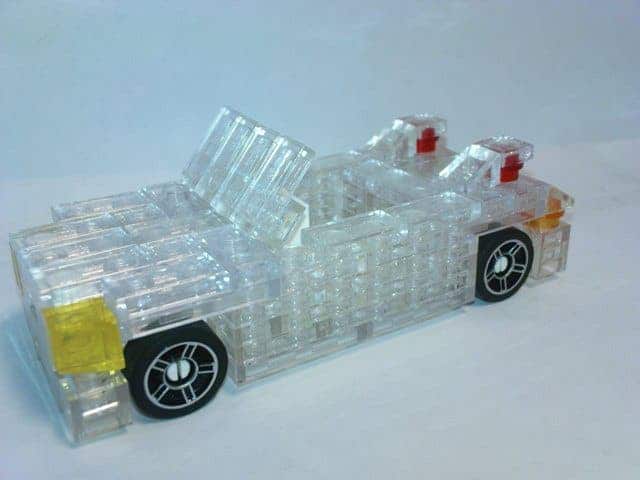This is the biggest news that no one seems to notice. Sunvault Energy and the Edison Power Company quietly announced they’re incorporating a new company called the the Edison Motor Cars Corporation which will focus on selling hydrogen powered cars running on a graphene-based fuel cells. Based on the press release, this is the dream vehicle the world was promised by the now disappointing hydrogen economy: a car that only runs on water and a bit of electricity, is lightning fast, has a high autonomy, is safe and charges within minutes to be ready to hit the road again. To top everything over, the car will allegedly be ready in 2016. That’s less than a year from now. But we don’t know how the car looks like and considering all these bombastic claims, it all looks like a bunch of star dust in the eyes.

The first model is called Edison Electron One. It runs with an electric drive for each of the four wheels enabling 1,355 Newton meters of torque or double that of the Ferrari 488 GTB and a third more than Tesla’s P85D, Edison Motor Cars’ direct competitor. The car is also expected to do zero to sixty in 2.0 to 2.2 seconds and be rechargeable in 5 minutes, subject to power availability at charging stations. Basically, according to the company, you need to add water and while its charging, electricity will split the molecules into hydrogen – fast enough to fill the tank, apparently. Which brings the question of autonomy, reportedly at the same level of other competitive electric cars. Tesla’s latest model, P85D, can run 200 miles on a single charge.
Edison Electron One, the ghost car
The flagship technology seems to be the Graphene Energy Storage System, which we have no additional information on other than it will be used to stored the hydrogen molecules. Storage is one of the biggest concerns as far as hydrogen cars are concerned since the molecule is so tiny that it easily leaches out of most containers. Several proposals based on the design of advanced materials such as metal hydrides and carbon structures have been made to overcome the limitations of the conventional solution of compressing or liquefying hydrogen in tanks. Neither have proven to work well, particularly at controlling the adsorption/desorption processes. Did the Edison Company succeeded where everyone else failed with a graphene-based storage system? They might be on to something. In 2014, University of Maryland researchers made the world’s highest-density hydrogen storage system, using “graphene origami.” This year, the U.S. Department of Energy (DOE) announced a grant of around $4.6 million for four projects to develop advanced hydrogen storage materials that hold the potential to enable longer driving ranges and help make innovative fuel cell systems.
From the storage system, hydrogen is then transferred to fuel cells (which kind? again, we don’t know) which convert the chemical energy into electricity used to power the drives.
“We are excited to be producing this truly revolutionary automobile that will put our Graphene Energy Storage Device front and center on the world stage at the simple turn of a key,” says Sunvault Energy chief executive officer Gary Monaghan. “The Electron One will not only be able to challenge any vehicle in performance, but will also be fully flexible, functional and convenient, just as a fuel-filled vehicle is today.”
“With our Energy Storage Device, reliability and peace of mind are wrapped in one design,” added Monaghan.
The Graphene Energy Storage System will be showcased at the The Battery Show 2015 in Detroit in two weeks. Hopefully, we’ll get more specs when a physical model is unveiled. As for the car itself, Sunvault says it will be ready in the first quarter of 2016. Manufacturing and assembly will be handled by a partner, MK Technologies Ltd. The Edison Electron One is only available to customers on a special-order basis.
“The Electron One will not only be able to challenge any vehicle in performance, but will also be fully flexible, functional and convenient, just as a fuel-filled vehicle is today.”
Will it make me a sandwich, too? Maybe I’m far too cynical right now, but something doesn’t smell right. Granted, press releases never cover the shortcoming and fails. Right now, they’re feeding people with what they want to hear: “it only runs on water”, “it won’t blow up!”, “it charges in 5 minutes”. What really grinds my gears is how they plan on scaling this car or how much will it cost for that matter. For instance, Tesla had to build its own battery manufacturing plant, which cost $5 billion, to stay competitive. In contrast, the Edison Motor Cars Corporation just got incorporated this year and expects selling its first car in just a matter of months. Yeah, and people still don’t know what it looks like. Does it even exist? At this point, Tesla Motors vs Edison Motor Company can’t be called a competition – nothing nearly as close to the archrivalry between the great scientists at the turn of the past two centuries.






